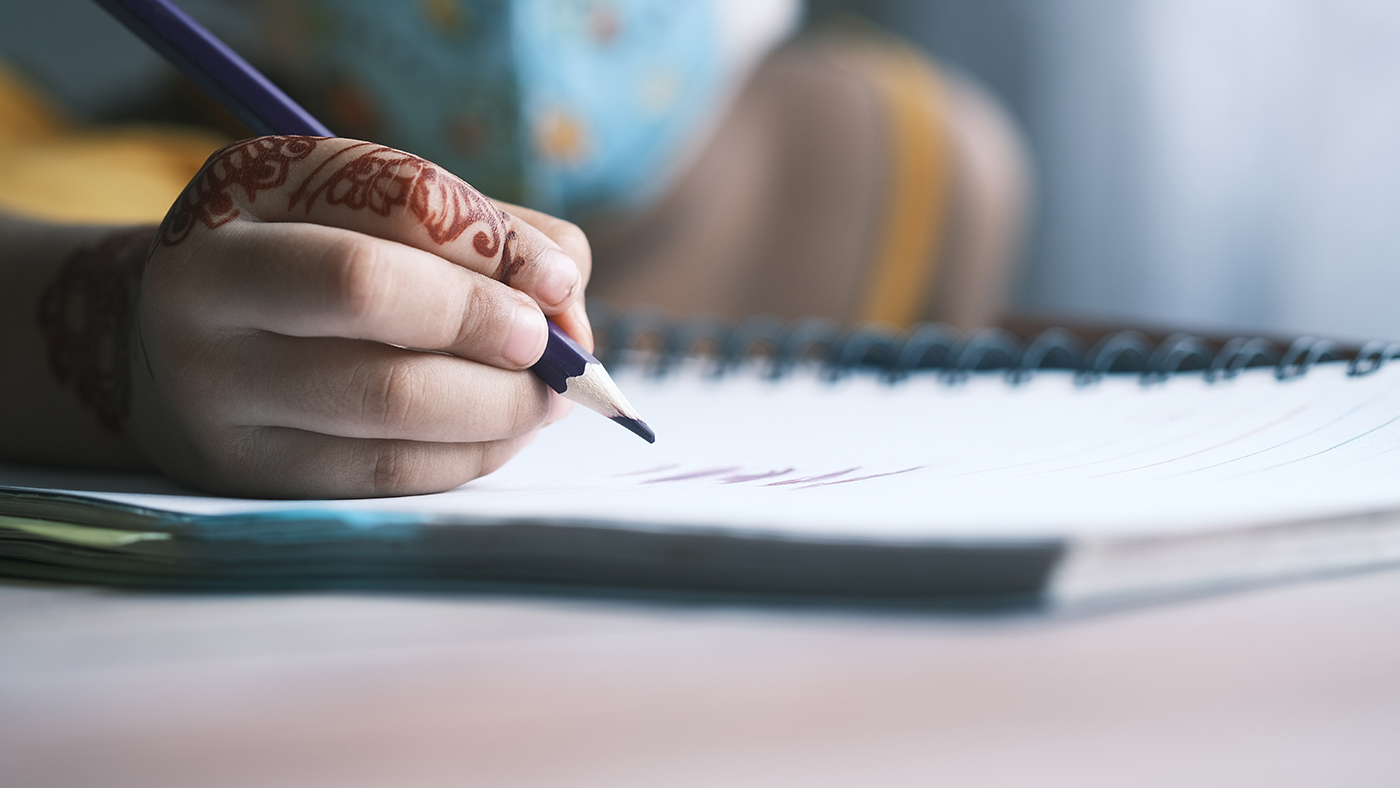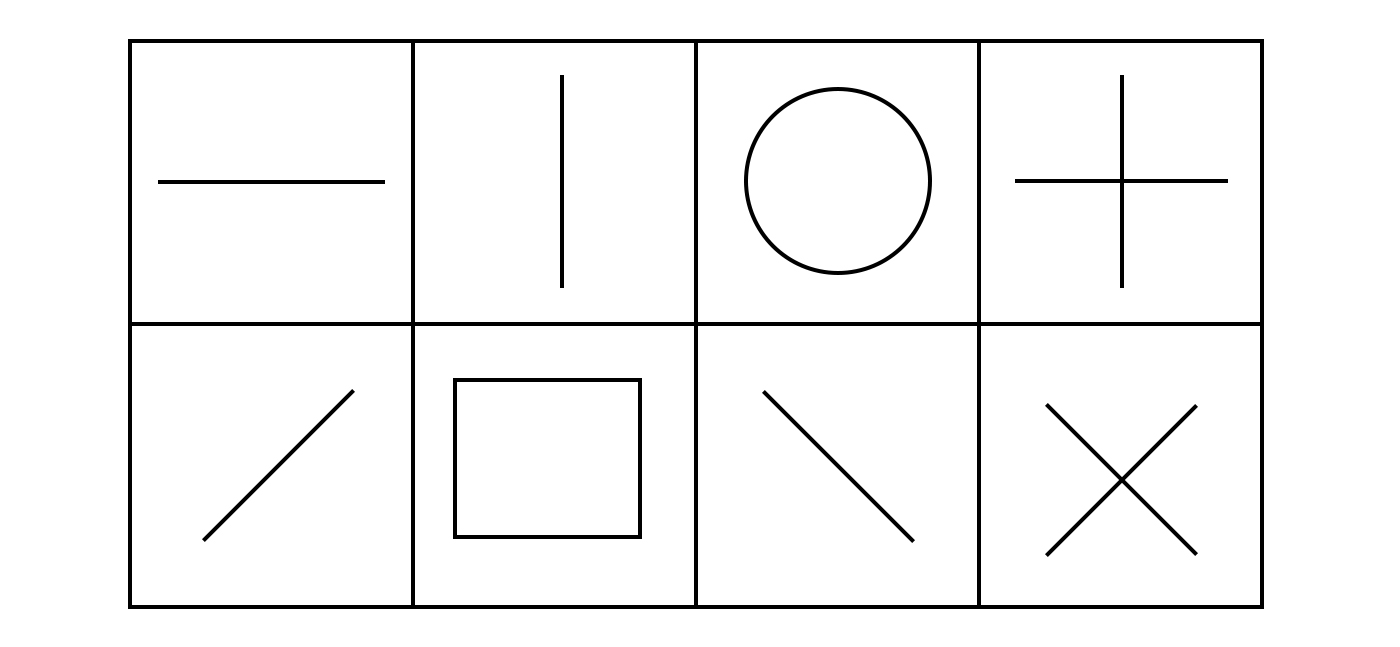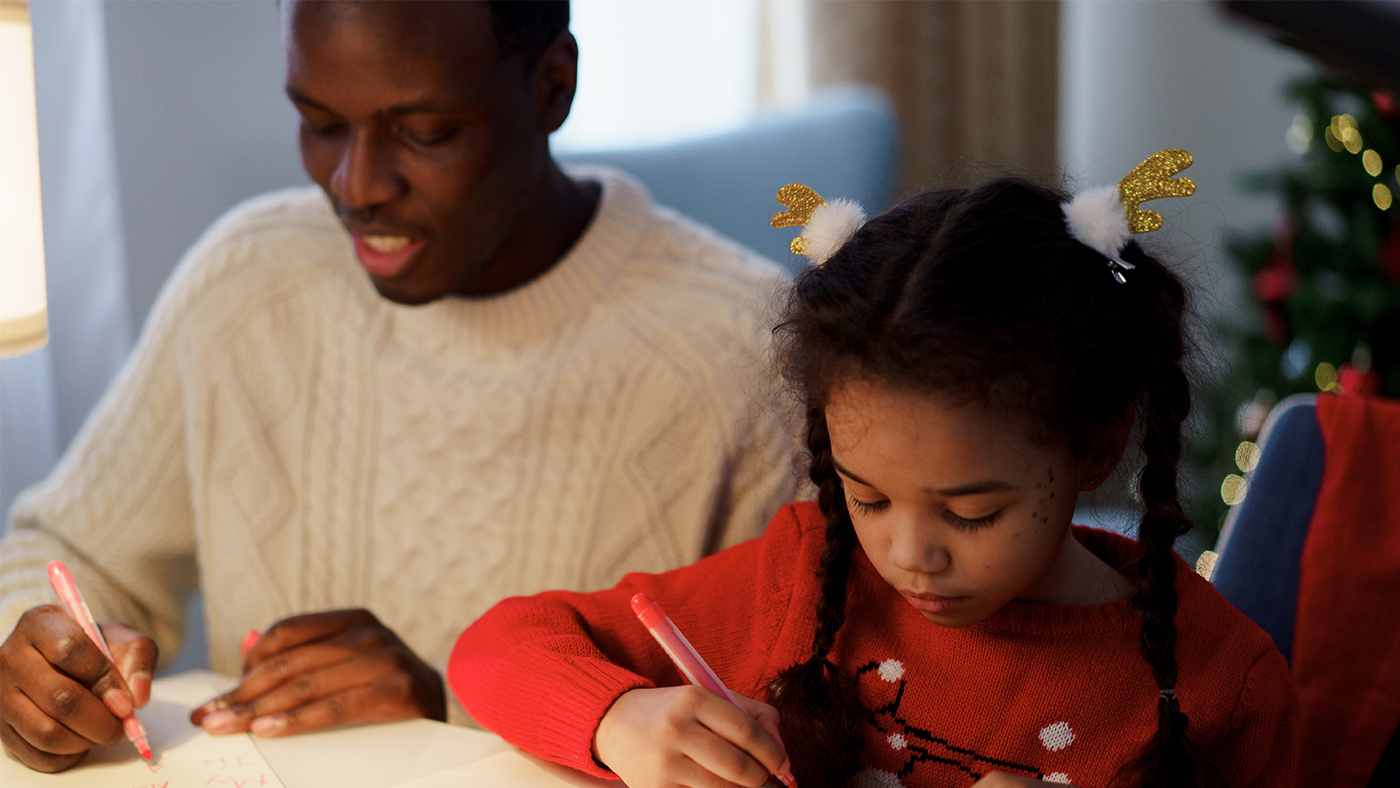Advanced fine motor skills: Our top five practices to develop writing and drawing in growing minds
- Fine Motor,
- Parenting

How do you feel about handwriting? Is it a traditional art or something that is still relevant today? Our own handwriting often feels very personal, tailored to our own unique style, which makes it a part of our self-image and even an expression of our personality. I remember spending a long time perfecting my signature! Handwriting is an important way of communicating and expressing language, and just like speech, it also leaves a lasting record. It is a physical way of expressing thoughts and ideas and communicating with others. When your child masters writing their name or their first sentence, they may feel extremely proud to have made (and left) their mark and this may feel like a really important rite of passage.
At My First Five Years, we highlight the six streams of children’s development, however we also emphasise that these six domains of development are interrelated, as each stream affects the other. Handwriting is a very complex skill to master, one that involves language, cognitive, emotional and gross and fine motor elements, all of which have to be coordinated and integrated.

Advanced fine motor skills - practice makes perfect
As your child grows, they lay down and reinforce neural networks with their repeated patterns of movement and as a result their motor skills improve. At first, in the early years, this is quite a speedy process, but one which gradually slows as smaller developmental increments occur. Even the simplest of everyday actions involve your child in a complex sequence of tensing and relaxing many different muscles. For many actions we, as adults, have had repeated practice over our lifetime, meaning that these actions can be performed faster, more smoothly and more accurately. Writing is an example of this as at first, when we are learning to write, forming each letter can take great concentration and effort, as we plan and carry out the combination of movements, but over time, with continual practice, writing and other similar actions which are just as complicated, such as knitting, or even playing a tune on a musical instrument, can be performed almost automatically and without thought.
We often talk about these skills as being held in muscle memory, but this term is really a bit of a misnomer. Although certain skills, like riding a bike, kicking a ball or writing, do require the strengthening of certain muscles, the processes that are important for learning and memory of new skills also occur in the brain. Changes that occur in the brain during skill learning and memory alter the information that the brain sends out to the muscles, thereby changing the movements that are produced.[1]
Our top five tips for supporting your child’s advanced fine motor skills
At My First Five Years, we hold a clear position that the journey to develop and master the varied skills which lead to smooth and fluent handwriting should not be hurried. Earlier is not always better, rather laying strong foundations which are appropriate for your child’s current stage of development is the key for later success
1) Handwriting practice - start with your child’s level of development
We advocate taking a fun, broad, sensory approach to developing writing skills for all children.
Developing the consequential advanced motor skills to write neatly and fluently requires your child to orchestrate multiple skills involving the eyes, arms, hands, memory, posture and body control, as well as managing pencil, paper and following instructions.
 Image 1. Areas of development underpinning handwriting (Michelle van Rooyen)
Image 1. Areas of development underpinning handwriting (Michelle van Rooyen)
Fostering fluent handwriting involves your child integrating their still-developing fine motor skills with an understanding of written language, in order to produce a mark that has meaning. At first, this process will necessitate a great deal of willingness from your child to initiate the activity and persevere, not to mention the attention and self-regulation to plan, coordinate and execute the movements.[2]
Offering meaningful activities which foster a desire to write is a really helpful approach to support your child as they navigate this stage. If your child sees you modelling writing in real life situations or as part of everyday tasks, this will help them to see that we live in a literate world where marks provide a valuable means of communication. Aim to engage your child with their own meaningful writing opportunities as often as possible, such as jotting down a shopping list, writing a birthday card for a friend or filling out a calendar.
If you are worried about your child’s handwriting, think about the basis for your worry, for example, it may be helpful to understand if you are concerned about your child’s reluctance to write, or the legibility, neatness or speed of their writing. In order to identify how to support them best, it may be helpful to watch HOW your child writes, the process they go though, not just focusing on the end product on the page. Have a conversation to find out how your child feels about their handwriting, are they worried about it, do they find it difficult? If your child has started school, it may also be helpful to liaise with the school to find out about how and when handwriting is taught and whether there is a particular approach or style.
2) Foster advanced fine motor skills through a range of activities
Noticing your child’s general fine-motor coordination in other situations, with other tools or implements, for example, when doing up buttons, using a knife and fork or playing with construction toys, will give you an indication of whether motor coordination might be contributing to any writing difficulties.
We can see that there is a complex web of skills to be fostered before a pencil or pen can be manipulated successfully. Lacing and threading activities, card games, puzzles, Lego and other construction toys, sewing, weaving, using play dough and manipulating other, stiffer malleable materials, such as clay, all support many of these aspects of development. These can complement the developing skills to use pen and paper.
3) Cursive writing
Many schools are opting to teach a continuous cursive style of handwriting throughout the school. This may begin early in the Reception class, so your child may begin to learn this approach when they are four or five years old.
When encountering this, confusion may arise over the term ‘cursive’ (which is derived from Latin and means ‘to run’ or ‘flow,' as in the ‘current’ of a river). This is often used as a general descriptive term rather than being specific to any one style of handwriting. So, again, it is worth talking to your child’s teacher to understand the style of ‘joined up’ writing your child may be learning, in order to offer the best support at home.
We offer a cautionary word, as we know that research evidence indicates a mixed feeling about teaching young children a cursive style. Firstly, from a visual perceptual perspective, some early studies have shown that in order to learn to write, the emergent writer needs to develop an abstract internal representation of each letterform which is then translated into a motor trace. This is more easily achieved if each letter is presented as an individual unit, separate from letter strings. Secondly, beginner writers often need to stop to think about each letter-sound correspondence as they write. Children learning formal cursive, however, might think they are expected to write the word in one continuous flow.[3]

Image 2: Example of cursive letterforms with entry and exit strokes.
As a parent, you might find that teaching a continuous cursive style, with flowing letterforms and baseline ‘entry’ and ‘exit’ strokes, is achievable for your child, and in fact enjoyable, but some children may struggle. We advocate looking closely at what a cursive style entails. The arm and hand need to move slowly across the page while the fingers simultaneously perform a range of complex fine movements in a series of different directions, and this requires a high level of gross and fine motor-coordination.
We return to our principle that handwriting skills need to be supported in a developmentally appropriate way, so, matched to your child’s stage of development. Any assessment you make of your child’s ‘readiness’ for cursive writing needs to relate back to mastery of all the underpinning skills we have described.
It’s also worth noting that research suggests that over the long term many teenagers and adults do not write fully cursively; most use a mix of joined and un-joined script.[3] It’s interesting to reflect on this and see how, or if, this fits with your own experience.
4) Tracing lines and letters
Linked to developing handwriting skills, we are often asked if ‘tracing’ is a helpful way of encouraging fine motor control. Tracing can be useful as a means to help your child consolidate internal representations of each letter shape, however, we advocate ‘tracing’ activities are initially interpreted in a broad and playful way and take place in a range of multi-sensory ways, rather than simply tracing lines with pen on paper. Lots of practice, in a variety of fun and relaxed ways, is the best way to help your child’s letter formation become automatic. 
Image 2: From VMI Aministration, Scoring and Teaching Manual. 6th Edition (Beery, 2010)
Beery (2010) proposed that a child will be ready for formal instruction in handwriting if they manage to master the first eight figures of the Developmental Test of Visual-Motor Integrations (VMI).
We recommend you explore how your child is able to form of these figures in multi-sensory ways before attempting to replicate them with a pen and paper at the table. Starting with large movements before small ones, for example, practise drawing a large circle on the wall with chalk or trace the lines of a square with the whole body by walking around a square of masking tape on the ground. By involving as many of the senses as possible, children can develop their own internal representations of the shapes in the style of learning that suits them best.
By using touch, you could trace a shape or letter on your child’s back with a finger and ask them to guess the shape and then encourage them to trace a shape or letter on your back. Giving a commentary about the directionality of your lines as you draw the shape can help, for example “I’m starting at the top and going down and then drawing a line across the middle” (as you draw a cross). Having the opportunity to trace over letter shapes with a finger and to watch you demonstrate forming letters, are helpful steps prior to your child being able to copy a shape without a demonstration.
If your child masters these shapes confidently, they could begin to explore letter formation in family groups. This helps prevent reversals of letters and allows the child to practise one type of movement for several letters. There are several different ways of grouping letters into families, depending on the particular programme your child may be following at school. One common example is:
- Anti-clockwise letters (a, c, d, e, g, o, q)
- Clockwise letters (b, h, k, m, n, p, r)
- Straight letters (i, j, l, t)
- Under arch letters (u, y)
- Diagonal letters (v, w, x, z)
- Curvy letters (f, s)
- Describing the direction as you and they are forming the letters is helpful. This gives auditory feedback as well as visual and kinaesthetic information, to help your child remember the correct letter formation.
6) Drawing a person
Your child’s drawing skills are not only an additional reflection of the development of their fine motor skills and eye-hand coordination but give us great insight into their thinking! Children don’t tend to learn to draw a person by being shown by an adult. Rather, their increased cognitive understanding and body awareness is reflected in the way their drawings develop.
Offering children interesting tools to draw with alongside a range of surfaces to draw on (which are readily available at all times) can help them choose to draw freely without pressure or adult direction. Children’s drawings of people tend to begin with a circle-type shape for a head with legs sprouting directly from that circle, then gradually other details such as arms and eyes are added. You might notice this progress to arms with hands and fingers at the ends, more elaborate faces, and sometimes the trunks of bodies.
It’s great to see your child’s thinking becomes visible as they start to draw groups of people, such as family or friends. All the bodies usually look much the same but could have differences in hair and clothing or to express gender. They may draw familiar people in action, showing them using their bodies to accomplish work and play. Drawings offer us a wonderful window into our children’s thinking and their developing understanding of the world, and can show us current fascinations and what they hold important.

At My First Five Years, our principles guide us and are interwoven with our six streams of learning. To find out more about how to support your child’s fine motor development, take a look at our My First Five Years app.
References
[1] Ungerleider, L.G, Doyon, J, & Karni, A. (2002). Imaging brain plasticity during motor skill learning. Neurobiology of Learning and Memory 78: 553–564
[2] Chandler, M.C., Gerde, H.K., Bowles, R.P., McRoy, K.Z., Pontifex, M.B., Bingham, G.E. (2021) Self-regulation moderates the relationship between fine motor skills and writing in early childhood. Early Childhood Research Quarterly, Volume 57, 239- 250: 1 October 2021
[3] Dunsmuir, S. & Blatchford, P. (2004), Predictors of writing competence in 4 to 7 year-old children. British Journal of Educational Psychology (2004), 74, 461–48
